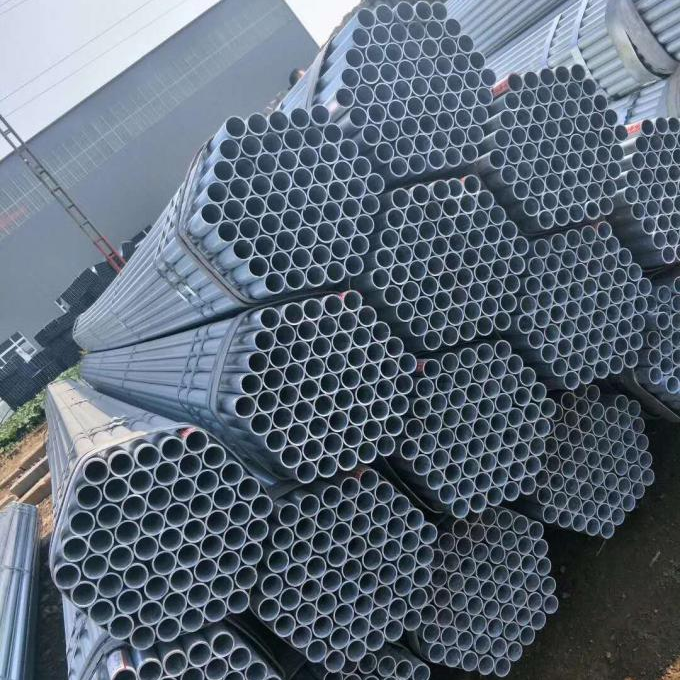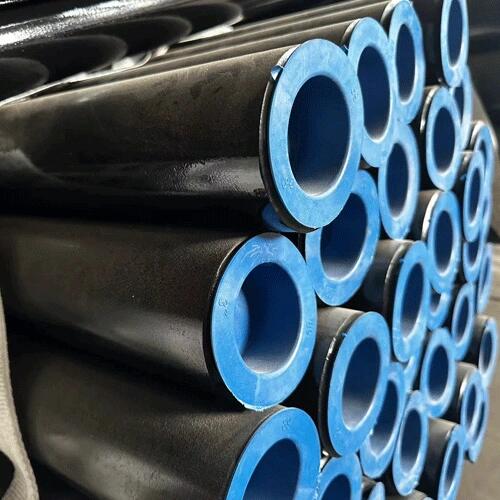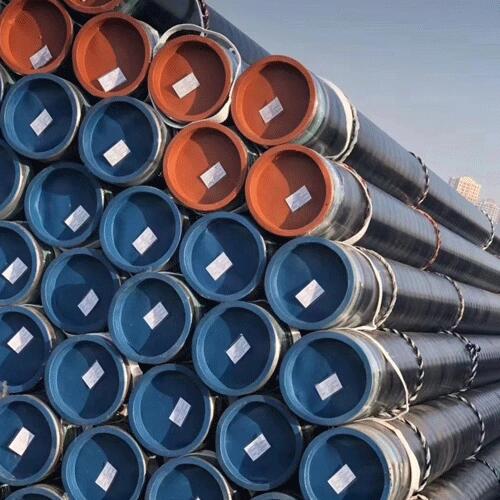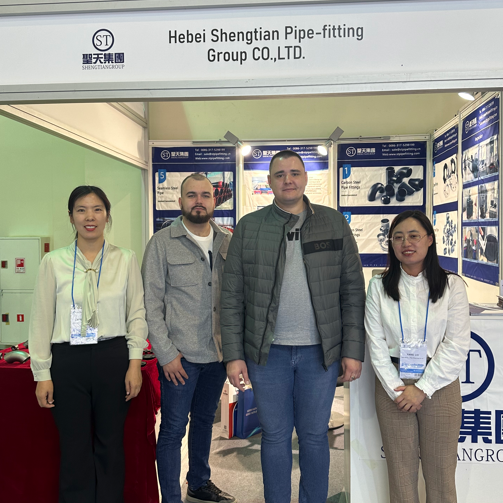ASTM A312 304 stainless steel pipe contains 16% to 24% chromium, as well as small amounts of carbon and manganese. The most common form is 18-8 stainless steel. It contains 18% chromium and 8% nickel. 316 stainless steel pipe has almost the same physical and mechanical properties as 304 stainless steel. The main difference is that 316 stainless steel contains about 2% to 3% molybdenum. Additives improve corrosion resistance, especially against chlorides and other industrial solvents.This article will discuss the 8 differences between 304 and 316 stainless steel pipes.
1.Chemical composition
We can see from the table that the biggest difference between 304 stainless steel and 316 stainless steel is that 316 stainless steel has 2-3 more molybdenum than 304 stainless steel. This helps resist corrosion from chlorides such as seawater and de-icing salts.
Replacement 300 Series grades can contain up to 7% molybdenum. They have better chloride resistance. But this type of heavy duty resistor is only needed in industrial or high concentration exposure conditions.
Grade304 material316 material
Carbon0.08% max0.08% max
Silicon1.00% max1.00% max
Manganese2.00% max2.00% max
Phosphorus0.045% max0.045% max
Sulfur0.015%0.015%
Nitrogen0.10%0.10%
Chromium18.00-20.00%16.00-18.00%
Nickel8.00-10.50%10.00-14.00%
Molybdenum/2.00-3.00%
2.Performance
ASTM A312 304 stainless steel is the most common steel type. As a versatile metal, it has good corrosion resistance, heat resistance, low temperature strength and mechanical properties. Good hot workability such as stamping and bending. No heat treatment hardening phenomenon (non-magnetic, use temperature -196℃~800℃).
Due to the addition of molybdenum, 316 stainless steel has particularly good corrosion resistance, atmospheric corrosion resistance, and high temperature strength. Can be used in harsh conditions. Excellent work hardenability (non-magnetic).
3.Application
(1)304 application scope
Kitchen accessories such as sinks and splashbacks, pans, cutlery, cutlery, cabinets
Kitchen appliances such as refrigerators and dishwashers
Indoor pipes, water heaters, boilers, bathtubs and other household items
heat exchanger
Commercial food processing equipment, breweries, pharmaceutical manufacturing equipment
Manufacture of nuts, bolts, screws and nuts
Water pipes, storage tanks, indoor electrical enclosures, automotive interiors
Decorative strips
(2)316 application scope
Chemical pipelines
Pharmaceutical equipment
Medical equipment and tools
Stainless steel float
Structural steel and components in marine environments
Manufacturing of food, chemical and petroleum production and processing equipment
Laboratory bench and equipment construction
Architectural paneling in coastal areas
Marine hardware and pipes
4. Corrosion resistance
Between 304 and 316 stainless steel, 316 stainless steel has better corrosion resistance than 304 stainless steel. It has good corrosion resistance in industrial production. In addition, 316 stainless steel is also resistant to corrosion from the ocean and corrosive industrial atmospheres.Generally speaking, there is not much difference in chemical resistance between 304 and 316 stainless steel. However, there are differences in some environments.
The stainless steel originally developed was 304. In some cases, this material is susceptible to pitting corrosion. An additional 2-3% of molybdenum can reduce this sensitivity. From this the 316 was born. Additionally, this additional molybdenum can reduce corrosion from certain hot organic acids.
316 stainless steel has almost become a standard material in the electronics industry. Due to the world's shortage of molybdenum and the nickel content in 316 stainless steel. 316 stainless steel is more expensive than 304 stainless steel. Pitting corrosion is a phenomenon mainly caused by corrosion deposits on the surface of stainless steel. This is because the protective layer of chromium oxide does not form in the absence of oxygen.
Especially for small valves, the possibility of deposits on the valve plate is very small. Therefore, pitting corrosion is also rare. Among them, various water media (distilled water, drinking water, river water, boiler water, sea water, etc.). ASTM A312 304 and 316 stainless steel pipes have almost the same corrosion resistance. Unless the chloride ion content in the medium is very high. Now, 316 stainless steel is more suitable. In most cases, the corrosion resistance of 304 and 316 stainless steel is not much different. But in some cases, it can also vary significantly. Specific analysis is required. In general, valve users should be aware of this. Because they choose the materials of containers and pipes based on the medium.
5. Cost
The cost of stainless steel depends largely on the composition of the alloy. All stainless steels require a minimum chromium content of 10.5%. They are alloys made with iron. However, various other elements are present that can have an impact on performance and features, and ultimately cost. 316 contains at least 2.0% molybdenum. It is more corrosion resistant than 304 stainless steel. Molybdenum is a more expensive element, and generally, it makes 316 a more expensive metal grade.
6.Material properties
Austenitic stainless steel has the lowest yield point of all steels. So in terms of mechanical properties, austenitic stainless steel is not the best material for the valve stem. Because of its certain strength, the diameter of the valve stem will increase. The yield point cannot be increased by heat treatment but can be increased by cold forming.
Name304 material316 material
Yield strength≥205≥175
Tensile strength≥520≥480
Elongation (%)≥40≥40
HardnessHB≤187, HRB≤90, ≤200HB≤187, HRB≤90, ≤200
Density7.93 g/cm37.87 g/cm3
Resistivity0.73Ω.mm²/meter0.71Ω.mm²/meter
Melting point1398-1420℃1398-1420℃
7.Magnetism
Due to the widespread use of austenitic stainless steel pipes, people have been given the wrong impression that all stainless steels are non-magnetic. For austenitic stainless steel, it can basically be understood as non-magnetic. Because this is the case with quenched forged steel. However, cold formed 304 will have certain magnetism. For cast steel, if it is 100% austenitic stainless steel, it is non-magnetic.
8. Low carbon type
The corrosion resistance of austenitic stainless steel comes from the protective layer of chromium oxide formed on the metal surface. If the material is heated to a temperature between 450°C and 900°C. The structure of the material changes, forming chromium carbide along the edges of the crystals. Therefore, a chromium oxide protective layer cannot be formed on the edge of the crystal, resulting in a decrease in corrosion resistance. This type of corrosion is called "intergranular corrosion."
304L stainless steel and 316L stainless steel were developed to combat this corrosion. Both 304L stainless steel and 316L stainless steel have lower carbon content. Due to the reduced carbon content, chromium carbide will not be produced and intergranular corrosion will not occur.
It is important to note that higher susceptibility to intergranular corrosion does not mean that non-low carbon materials are more susceptible to corrosion. This sensitivity is also higher in high chlorine environments.
Please note: This phenomenon is caused by high temperature (450°C-900°C). Usually welding is the direct cause of reaching this temperature. For soft-seat conventional butterfly valves, using low carbon stainless steel doesn't make much sense since we don't do the welding on the valve plate. However, most specifications require 304L stainless steel or 316L stainless steel.
Shengtian Group produces stainless steel seamless pipe factory,ASTM A312 304 and ASTM A312 316 stainless steel pipe are the two most widely used stainless steel casting grades in the world. Both have excellent corrosion resistance and use value. According to different production methods, these two metal pipes can be divided into stainless steel seamless pipes and welded pipes.
 How to apply hot dipped galvanized steel pipe?
How to apply hot dipped galvanized steel pipe?
 Why should Seamless steel pipes be epoxy powder coated?
Why should Seamless steel pipes be epoxy powder coated?
 ASTM A106 Thick-walled steel pipe production steps
ASTM A106 Thick-walled steel pipe production steps
 Shengtian Group successfully participated in the Russian Oil and Gas Exhibition
Shengtian Group successfully participated in the Russian Oil and Gas Exhibition